Petroglyph National Monument is located in North-Central New Mexico near Albuquerque. The park is filled with more than 24,000 examples of rock art and petroglyphs.

Petroglyph National Monument
One interesting thing to know is that petroglyphs are created by carving or pecking away at the dark patina on boulders or cliff faces to reveal the lighter-colored rock underneath.
This is different from pictographs which are created using paint.

About Petroglyph National Monument
Ancestral Puebloan people lived in the Rio Grande Valley beginning before A.D. 500. Most archaeologists believe that the petroglyphs found in the park are from between 1300 and the late 1600s.
The petroglyphs were created by both Indians and Spaniards during the time that Spain occupied the area around 1540.
The best way to enjoy Petroglyph National Monument is to start at the visitor center to get the most up-to-date information on the park.
Then head over to Boca Negra Canyon to enjoy the short easy paved trails that lead to views of over 200 petroglyphs. The trails are easily accessible and give you the opportunity to see petroglyphs up close and personal.
If you are looking to explore a little deeper into the park you can head out and explore the Rinconada Canyon Trail which is 1.25 miles each way.
This trail passes along an escarpment of basalt that was deposited during volcanic eruptions 200,000 years ago. There are several hundred petroglyphs that can be seen along the trail.

Is Petroglyph National Monument worth visiting?
Yes! This is one of our favorite US National Monument. Visitors have the opportunity to walk close to ancient petroglyphs without having to hike for miles.
Petroglyph National Monument protects one of the largest petroglyph sites. The park provides parking areas and easy access to see the petroglyphs in volcanic rocks.
History of Petroglyph National Monument
On the outskirts of Albuquerque, New Mexico, is one of the grandest collections of petroglyphs in North America. More than 20,000 examples of the specialized rock art adorn a 17-mile stretch of the volcanic escarpment.
The creation of the petroglyph collection began over 3,000 years ago and today reflects changes in Native American cultures and the influence of European colonization in the Americas.
The Rift Valley in Petroglyph National Monument
The unique setting of Petroglyph National Monument is its rift valley. A rift valley occurs as two tectonic plates slowly separate from each other.
As the giant subterranean masses move away from each, portions of the earth’s crust collapse while ridges rise or sink on either side of the rift.
In these places where the earth’s crust is thinned by the expanding rift, unique features develop such as fissure volcanoes.
In Petroglyph National Monument a row of volcanoes, endearingly called The Three Sisters, are physical reminders of the geologic forces moving about beneath our feet.
A series of eruptions more nearly 200,000 year ago occurred in a row along the rift valley.
The lava flows from these eruptions formed the massive basalt walls upon which the petroglyphs are carved. High levels of minerals within the basalt walls lead to unique coloration due to oxidation. A thin, black coating of oxidized iron and manganese cover the 17-mile wall.
Without much force, the thin coating can be chipped away to expose the brightly colored, unoxidized basalt beneath. Native Americans discovered this thousands of years ago and began chipping their histories and hopes into the rock face.
The Native American Story at Petroglyph
Native American presence around Albuquerque dates back over 10,000 years. The earliest identified Native American culture group, called the Clovis people, are thought to be some of the earliest human arrivals into North America during the last Ice Age.
The Clovis migrated from the Bering Land Bridge in Alaska to the southern United States over hundreds of years.
The discovery of simplistic Clovis points, and later more advanced Folsom points, exposed the long history of Native American habitation near Albuquerque.
The Oldest Petroglyphs
While there are tens of thousands of petroglyphs at the monument, the vast majority of them were created in the past 800 years.
The rough dating of the petroglyphs is done by measuring and comparing surface oxidation. Older petroglyphs are darker due to longer exposure to the elements.
The earliest petroglyphs are estimated at 3,000 years old but the people who created them are as mysterious as the meaning of these petroglyphs.
Among the few canyons in the park, most of the oldest petroglyphs are concentrated in Boca Negra Canyon.
Petroglyphs of the Ancestral Puebloans
Over thousands of years, these hunter and gatherer groups gave way to more settled cultures. By 500 CE the Ancestral Puebloan culture dominated much of the Colorado Plateau.
More than 20,000 of the petroglyphs are attributed to the Ancestral Puebloans.
Figures pecked into the rock include snakes, warriors, fantastical figures, and natural phenomena.
The meaning of many of these artworks is lost to time, but spatial awareness and celestial alignment is an important features of Ancestral Puebloan culture.
Like the great houses of Chaco Canyon whose walls align with summer and winter solstice, many of the petroglyphs also contain points associated with constellations and astronomical movements.
Spanish Contributions and Control of Petroglyph
Following the trans-Atlantic voyages of Christopher Columbus, Spain established an empire in the New World which quickly stretched across the Americas.
Intrepid conquistadors looking for fabled cities of gold and uncountable wealth introduced disease and European hierarchies to the Native American cultures across the southwest.
Juan de Oñate is the Spaniard credited with setting up Spanish control of modern New Mexico.
Through the encomienda system and waves of Jesuit missionaries, cultures which developed from the Ancestral Puebloans found themselves under Spanish yokes.
The famous Popé’s Rebellion briefly pushed back the Spanish Empire before it rushed back in to form a more syncretic culture.
Puebloan culture fused with the newly arrived Spanish. This combination of cultures formed a unique Southwestern art style that has been scribed into the walls of Petroglyph National Monument.
The Spanish colonists themselves added their own artwork to the basalt canyon walls.
Over the course of the 1700s new Native American petroglyphs appeared less and less often.
Reasons contributing to this are depopulation through disease and outmigration as well as the tepid agreements between colonial and native religious leaders to practice Native American traditions secretively.
The U.S. in Petroglyph National Monument
The Spanish control of the areas surrounding New Mexico ended with the Mexican Revolution in the early 19th century.
Only a few decades later the United States took control of the area after the conclusion of the Mexican-American War (1846-1848). The Treaty of Guadalupe Hidalgo brought the petroglyphs officially under United States control.
Part of the Treaty of Guadalupe Hidalgo required honoring preexisting Spanish and Mexican land grants. Albuquerque and the surrounding region had been given as a grant in the late 1600s.
This grant, known as the Atrisco Land Grant, was honored by the United States. Descendants of the original recipients continue to control much of this land grant.
Inheritors of the land grant considerately placed a significant portion of the grant under the monument’s control in the 1960s in order to preserve its fragile petroglyphs.
In the 1960s, the State of New Mexico was responsible for protecting the park.
Becoming a National Monument
Despite the thousands of petroglyphs, Petroglyph National Monument did not come under federal protection until 1990.
Management of the monument today is carried out through a complex melange of local, state, and federal controls.
Debates have raged over the past three decades over how to balance preserving the park's historical wonders while improving access to the park and creating new housing developments.
The recently completed Paseo Del Norte highway, which skirts the northern and western edges of the park, required relocating centuries-petroglyphs. Each new development causes a multifaceted furor.
Petroglyph National Monument presents visitors with a timeline of North American history. The site’s artwork covers 1000s of years of Native American and Spanish colonial history.
The fragility of the petroglyphs and the complex U.S. federal system situate the park as a prime place to explore balancing history, environment, and commerce.

Things to know before your visit to Petroglyph National Monument
Entrance fee
Boca Negra Canyon Parking Fees - Automobiles and RVs: $1 weekdays or $2 weekends
There are no other fees charged in the monument.
Learn more about National Park Passes for parks that have an entrance fee.
$80.00 - For the America the Beautiful/National Park Pass. The pass covers entrance fees to all US National Park Sites and over 2,000 Federal Recreation Fee Sites for an entire year and covers everyone in the car for per-vehicle sites and up to 4 adults for per-person sites.
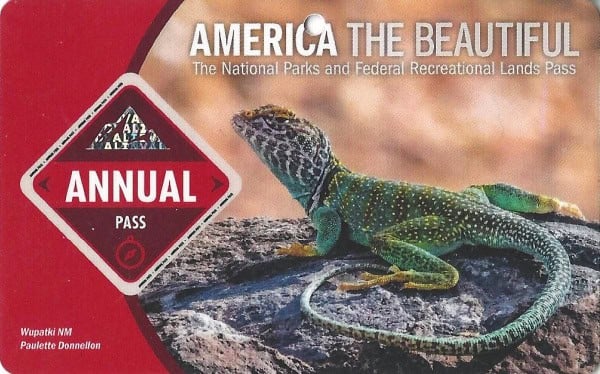
Buy your pass at this link, and REI will donate 10% of pass proceeds to the National Forest Foundation, National Park Foundation, and the U.S. Endowment for Forestry & Communities.
National Park Free Entrance Days -Mark your calendars with the five free entrance days the National Park Service offers annually.
Time Zone
Mountain Time
Pets
Pets must be kept on a leash less than 6 feet in length.
Pets are not allowed within buildings including visitor centers and restrooms.
Pets are not allowed on trails at Boca Negra Canyon.
Pets are allowed on the entire length of the Piedras Marcadas Canyon and at the Volcanoes Day Use Area.
In Rinconada Canyon pets are only allowed in the middle section, the non-petroglyph area.
The park suggests making sure your dog has boots or booties to protect its paws from the hot trail surfaces.
Cell Service
Cell service should be available from most major carriers
Park Hours
Visitor Center - Open 8:30 am to 4:30 pm
Boca Negra Canyon is open from 8:30 am to 4:30 pm with the last entry at 4 pm.
Volcanoes Day Use Area, Rinconada Canyon, and Piedras Marcadas Canyon are open sunrise to sunset.
Wi-Fi
Public WIFI is available in the park.
Insect Repellent
Insect repellent is always a great idea when outdoors, especially if you are around any body of water.
We use Permethrin Spray on our clothes before our park trips.
Water Bottle
Make sure to bring your own water bottle and plenty of water with you. Plastic water bottles are not sold in the park.
Parking
There are fairly good sized parking lots available within the park.
Food/Restaurants
There are no restaurants within the park.
Gas
There are no gas stations within the park.
Drones
Drones are not permitted within National Park Sites.
National Park Passport Stamps
National Park Passport stamps can be found in the visitor center.
Petroglyph NM is part of the 1998 Passport Stamp Set.
We like to use these circle stickers for park stamps so we don't have to bring our passport book with us on every trip.
The National Park Passport Book program is a great way to document all of the parks you have visitied.
You can get Passport Stickers and Annual Stamp Sets to help enhance your Passport Book.
Electric Vehicle Charging
There are 160 public EV Charging Stations in Albuquerque, New Mexico.
Accessibility
The park has limited accessible features. The visitor center is fully accessible with both parking spaces and wheelchair ramps.
Park brochures are available in Braille and large print at the visitor center.
Boca Negra Canyon has an accessible parking lot, patio, and restroom. The trails at Boca Negra Canyon are not accessible.
There is a view scope available to see the petroglyphs.
Rinconada Canyon has an accessible parking lot, vault restroom, picnic table, and shade structure. The trails at Rinconada Canyon are not accessible.
Piedras Marcadas Canyon has an accessible parking lot but the trails are not accessible.
Volcanoes area has a partially prepared developed trail. The park is working to acquire funds to make the full 1 mile trail accessible. The Volcanoes area does have an accessible parking lot, restroom, and shade structure.

Details about Petroglyph National Monument
Size - 7,532 acres
Check out how the park compares to other National Parks by Size.
Date Established
June 27, 1990
Visitation
In 2021, Petroglyph NM had 364,211 park visitors.
In 2020, Petroglyph NM had 356,492 park visitors.
In 2019, Petroglyph NM had 293,957 park visitors.
Learn more about the most visited and least visited National Parks in the US
National Park Address
The visitor center is located at the intersection of Unser Blvd. NW at Western Trail.
GPS Lat: 35.139 GPS Long: -106.711
Petroglyph National Monument Map


Where is Petroglyph National Monument?
Petroglyph NM is located near Albuquerque, New Mexico.
Estimated distance from major cities nearby
- El Paso, TX - 274 miles
- Colorado Springs, CO - 380 miles
- Lubbock, TX - 327 miles
- Tucson, AZ - 457 miles
- Mesa, AZ - 403 miles
- Scottsdale, AZ - 404 miles
- Phoenix, AZ - 415 miles
Estimated Distance from nearby National Park
Mesa Verde National Park - 241 miles
Great Sand Dunes National Park - 234 miles
Black Canyon of the Gunnison National Park - 328 miles
White Sands National Park - 232 miles
Carlsbad Caverns National Park - 306 miles
Where is the National Park Visitor Center?
The visitor center is well marked. There are no petroglyphs at the visitor center.
Visitor Center GPS coordinates: Lat: 35.139 Long: -106.711

Getting to Petroglyph National Monument
Closest Airports
- Albuquerque International Sunport (ABQ)
International Airports
- El Paso International Airport (ELP)
Regional Airports
- Sante Fe Municipal Airport (SAF)
- Los Alamos County Airport (LAM)
- Four Corners Regional Airport (FMN)
Bus Service
The City of Albuquerque does not offer bus transportation to Petroglyph National Monument.
Rise Share/Uber
If you are using an uber/car service to reach the park make sure you have them take you to the trail you plan to explore.
There are no trails at the visitor center and you will need to schedule another ride to get to the trailheads.
Also, make sure you have cell phone service to schedule a pick-up when you get to the trailheads.
Driving Directions
From Interstate 40: take the Unser Blvd. exit (#154) proceed north 3 miles to Western Trail. Turn left or west onto Western Trail and follow the road to the Visitor Center parking lot.
From Interstate 25: take the Paseo del Norte exit (#232) and proceed west to Coors Road exit south (you'll need to be in the center lane to veer left at the Y).
Proceed south on Coors Road to Western Trail. Turn right or west onto Western Trail and follow the road to the Visitor Center parking lot.
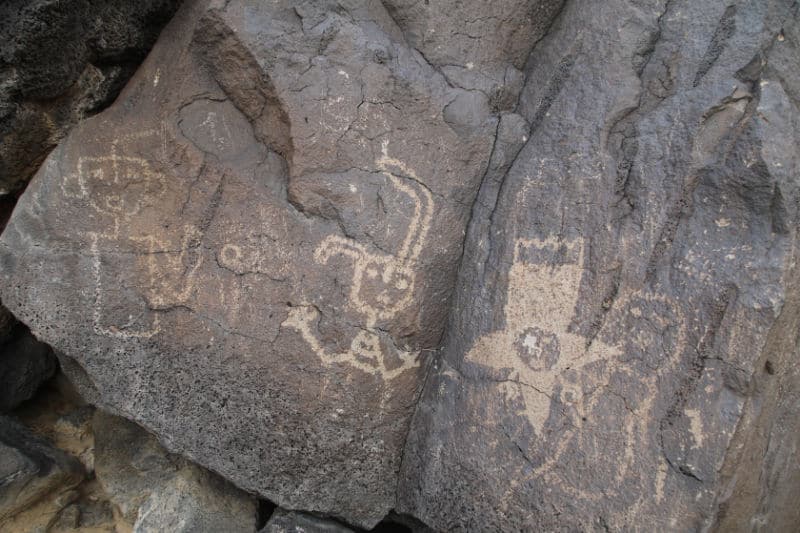
Best time to visit Petroglyph National Monument
The best time to visit Albuquerque and Petroglyph NM is Spring and Fall.
The weather shouldn't be super warm and it should be gorgeous.
Weather and Seasons
The hottest weather in Albuquerque is from May 24 to September 14th when the average daily high is above 84 degrees Fahrenheit.
The coldest weather is from November 21 to February 18th when the temperature is below 56 degrees Fahrenheit.
The rainiest weather is from June 17th to November 10th with August getting the most rain.

Best Things to do in Petroglyph National Monument
We suggest planning a minimum of a few hours to explore the park.
If you want to explore more of the hiking trails you will want to plan a full day starting early when the weather is cooler.
Visitor Center
The visitor center has a nice size bookstore, a couple of pieces of information but no real museum. The park film does a great job of detailing the history of the park and the importance of petroglyphs.
There is a small amphitheater outside for ranger programs. There is a small trail next to the visitor center with native plants highlighted.

Junior Ranger Program
You can pick up a Ranger Scout, a Junior Ranger, or a Senior Ranger activity book at the visitor center.
They checked every answer in our book when we turned it in at the visitor center.
They did a great job of helping with the couple of questions that we had missed.

Cell Phone Audio Tour
Look for the "Park Ranger Audio Tour" signs, call 505.353.3004, and enter the stop number. Cell phone service can be spotty in some areas of the park.
You may want to take a picture of the signs if you do not have cell service so you can call in at a later time and hear the information.
Boca Negra Canyon
Boca Negra Canyon has three short trails that give you the opportunity to see over 100 petroglyphs in a fairly quick time period.
The Macaw Trail at Boca Negra Canyon is super short! Be prepared with sturdy comfortable shoes though since you walking on a dirt and rock path.
There are rock steps that are a bit uneven.

Hiking in Petroglyph National Monument
Always carry the 10 essentials for outdoor survival when exploring.
All petroglyph viewing trails are a 1 to 7-mile driving distance from the visitor center.
Make sure you wear shoes that can handle walking on the rock trails and uneven ground.
Cliff Base Trail
The cliff base trail is 803 feet round trip. Most of the trail is asphalt but there are some areas of rocks.
If you or someone you are with is not comfortable walking on steps or along the trail many of the petroglyphs can be seen from the road or parking lot.
If you bring a pair of binoculars you can see many of them without walking along the trail. This is a great option for visitors with mobility restrictions.
Mesa Point Trail
The Mesa Point Trail is a series of stairs that lead you to a viewpoint at the top of the hill. The park service suggests 30 minutes minimum for this trail.
Rinconada Canyon
Rinconada canyon has 2.2 miles of trail service. Water is not available so make sure you bring some with you.
There are 300 petroglyphs that can be seen within the canyon.
Piedras Marcadas Canyon
1.5 miles of trails can be explored in Piedras Marcadas Canyon. There are approximately 400 petroglyphs within the canyon.
Volcanoes Day Use Area
Visitors can enjoy 1 to 4 miles of trails within the day-use area. There is no water available.
Don't forget to pack
Insect repellent is always a great idea outdoors, especially around any body of water.
We use Permethrin Spray on our clothes before our park trips. Please read my article on preventing biting insects while enjoying the outdoors.
Sunscreen - I buy environmentally friendly sunscreen whenever possible because you inevitably pull it out at the beach.
Bring your water bottle and plenty of water with you. Plastic water bottles are not sold in the park.
Sunglasses - I always bring sunglasses with me. I personally love Goodr sunglasses because they are lightweight, durable, and have awesome National Park Designs from several National Parks like Joshua Tree, Yellowstone, Hawaii Volcanoes, Acadia, Denali, and more!
Click here to get your National Parks Edition of Goodr Sunglasses!
Binoculars/Spotting Scope - These will help spot birds and wildlife and make them easier to identify. We tend to see waterfowl in the distance, and they are always just a bit too far to identify them without binoculars.

How to beat the crowds in Petroglyph National Monument?
We did not experience any crowds in the park. We do always suggest arriving early in the day to help avoid crowds.
Where to stay when visiting Petroglyph National Monument
There are no National Park Lodges within the park.
Hotel Andaluz Albuquerque, Curio Collection by Hilton - 4-star boutique hotel in the heart of Downtown Albuquerque. Consider a stay at Hotel Andaluz Albuquerque, Curio Collection by Hilton and take advantage of a rooftop terrace, a library, and dry cleaning/laundry services. Be sure to enjoy brunch at the onsite restaurant. Free in-room Wi-Fi is available to all guests, along with 2 bars and a gym.
TownePlace Suites by Marriott Albuquerque Old Town - Consider a stay at TownePlace Suites by Marriott Albuquerque Old Town and take advantage of free breakfast, a firepit, and dry cleaning/laundry services. Guests can connect to free in-room Wi-Fi.
Best Western Plus Rio Grande Inn - Consider a stay at Best Western Plus Rio Grande Inn and take advantage of a free roundtrip airport shuttle, a coffee shop/café, and dry cleaning/laundry services. For some rest and relaxation, visit the hot tub. The onsite restaurant, Wild Avocado, features American cuisine and happy hour. Free in-room Wi-Fi is available to all guests, along with a bar and a gym.
La Quinta Inn & Suites by Wyndham Albuquerque West - Take advantage of free to-go breakfast, laundry facilities, and a gym at La Quinta Inn & Suites by Wyndham Albuquerque West. For some rest and relaxation, visit the hot tub. Stay connected with free in-room Wi-Fi, and guests can find other amenities such as conference space.
Hampton Inn & Suites Albuquerque-Coors Road - Consider a stay at Hampton Inn & Suites Albuquerque-Coors Road and take advantage of a free breakfast buffet, shopping on site, and dry cleaning/laundry services. For some rest and relaxation, visit the hot tub. Stay connected with free in-room Wi-Fi, and guests can find other amenities such as a gym and a 24-hour business center.
Click on the map below to see the current rates for hotels and vacation rentals in Albuquerque, New Mexico.
Camping
There are no National Park Campgrounds within the park.
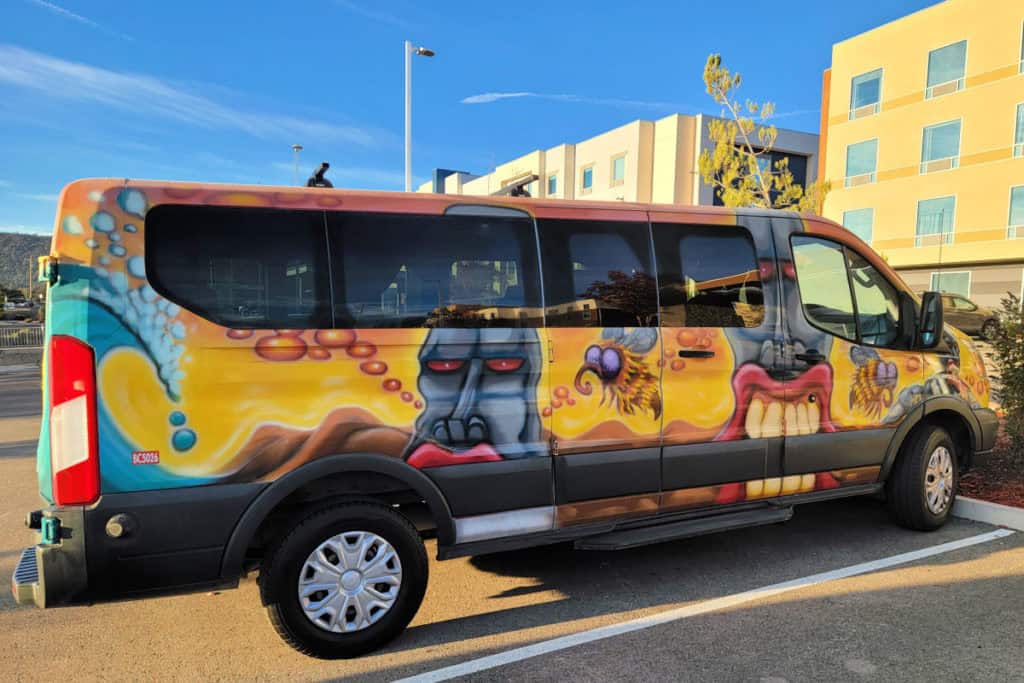
For a fun adventure check out Escape Campervans. These campervans have built in beds, kitchen area with refrigerators, and more. You can have them fully set up with kitchen supplies, bedding, and other fun extras. They are painted with epic designs you can't miss!
Escape Campervans has offices in Vancouver, Seattle, Portland, San Francisco, Las Vegas, Los Angeles, Phoenix, Salt Lake City, Denver, New York, and Orlando

Additional Resources
A Photographer's Guide to Petroglyph National Monument (Photography Guides Booklets to New Mexico & the Southwest)
Camera Gear we use
We are big fans of using great camera gear to get amazing photos while traveling.
Canon R5 - We recently upgraded to the R5 after using a Mark 5 for years. We are loving the camera shutter speed and quality of images.
Canon 100 - 500mm - We use the Canon 100-500 for wildlife photography.
Camera Rain Cover - A rain cover will help protect your camera during rain showers but also when photographing waterfalls.
Camera Cleaning Kit - Cameras can get dirty, beat up, and dusty while in the parks. We like having a cleaning kit with us so we can do on the spot touch ups.
Extra Camera Batteries - We suggest always having one or two extra camera batteries with you. There is nothing worse than going to take a shot and the battery dies.
Extra Memory Cards - We use Extreme PRO SanDisk cards
Parks Near Petroglyph National Monument
Valles Caldera National Preserve - 76.2 miles
Pecos National Historical Park - 85 miles
El Malpais National Monument - 102 miles
Bandelier National Monument - 106 miles
El Morro National Monument - 149 miles
Fort Union National Monument - 152 miles
Check out all of the New Mexico National Parks along with neighboring Arizona National Parks, Colorado National Parks, National Parks in Oklahoma, National Parks in Utah, and National Parks in Texas
Make sure to follow Park Ranger John on Facebook, Instagram, Pinterest, and TikTok

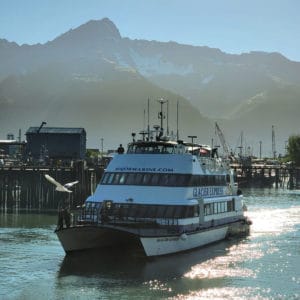

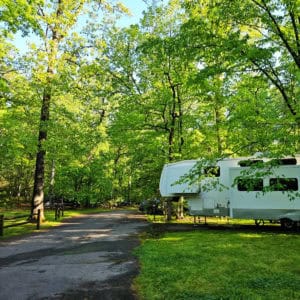

Leave a Reply